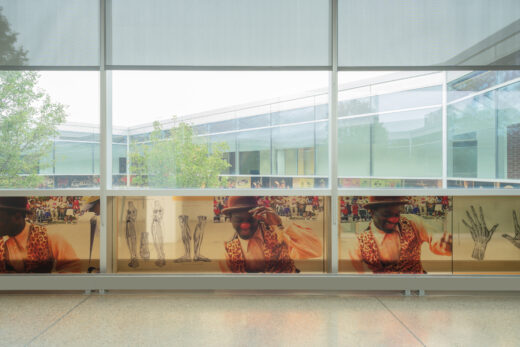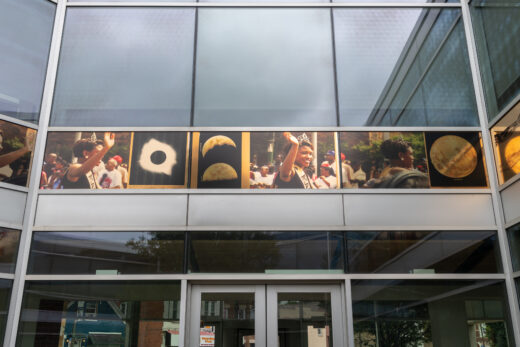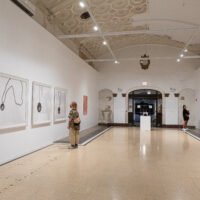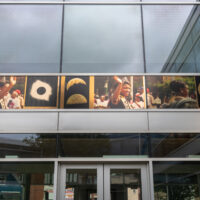Kerry James Marshall
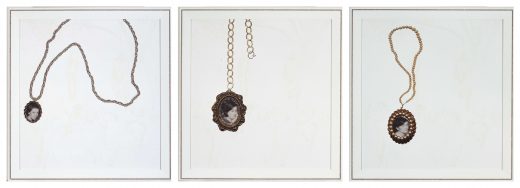
When Kerry James Marshall first read Ralph Ellison’s Invisible Man, the book’s opening pages stopped his artistic practice in its tracks. Writing to his audience, Ellison’s invisible man introduced himself as wholly present, alive and embodied, and yet also absent—because people “refused” to see him, because they either folded him into his surroundings or projected their perspectives upon him. From that moment (which was sometime in the late 1970s), Kerry James Marshall’s main artistic project became bringing Black subjects into focus, to enable his viewers to fully see them.
Born in 1955 in Birmingham, Alabama, Marshall absorbed history from a very young age. The civil rights era defined his childhood; after moving with his family to Los Angeles, he witnessed the Watts riots at just nine years old. It was early on, too, that Marshall knew he wanted to be an artist. He read widely about art history, educating himself on European masters, such as Goya and Ingres, and the American giants of mid-century abstraction. Though Marshall wanted to make work on the same level as these white male artists, he did not want to adapt their ways. Instead, he set his sights on making work that would, in its own right, rise just as powerfully upon the walls of history.
Beginning in the 1980s, Marshall began to paint figures who were—quite literally—as black as night. From subjects barely distinguishable from their dark backgrounds, Marshall moved to portraying jet-black figures within vibrant spaces, such as homes, parks, and beauty shops. He layered each work with symbols of the everyday African American experience and of historic images and events. He recalled moments of Black history, from the Dutch colonization of South Africa to Black athletes’ leather-gloved salute during the 1968 Summer Olympics. He inserted objects of the African diaspora (the cowrie shells of African currency, Ebony magazine covers), sprinkled glitter upon them, then interwove banners of Motown sheet music. He lifted settings from canonical paintings—Turner’s slave ship, Impressionist picnic spots. Converging upon Marshall’s canvases, these symbols create tension between each other and the two-dimensional plane they cohabitate. They do not join harmoniously; instead, his paintings push Black subjecthood forward, refusing to dissolve jet-black figures within their surroundings.
While Marshall is best known for these paintings, he has also portrayed Black subjecthood in other artistic media—yet he maintains his attention to history and the everyday lived experience of Black people. Marshall’s photography critically takes up journalistic or mass-media portrayals of Black people. Installation works refuse expectations of culturally sanitized objects within gallery spaces. All the while, Marshall guides our eye so that we can reinterpret history and recognize Black subjects’ richness of both imagination and reality. As Marshall said in a late-’90s interview, “Style is such an integral part of what black people do that just walking is not a simple thing. You’ve got to walk with style. You’ve got to talk with a certain rhythm; you’ve got to do things with some flair.” Marshall’s work makes this style fully visible.


